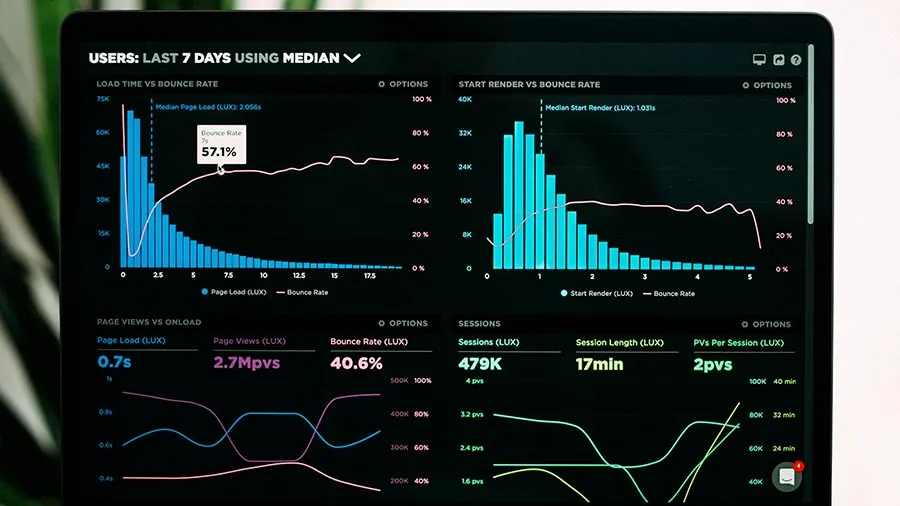The B2B buying group has changed dramatically. No longer driven by a single decision-maker, today’s purchases are influenced by cross-functional teams made up of stakeholders from various departments. Yet, many marketing and sales strategies still rely on outdated models like individual lead scoring or broad account targeting. To stay competitive and aligned with real-world buyer behavior, B2B organizations must shift their focus. In this blog, we’ll explore what buying committees are, why they matter, and how to activate them effectively.
What is a Buying Group?
In B2B marketing, a B2B buying group refers to a team of individuals within an organization who collectively influence or decide whether to purchase a product or service. These groups typically span multiple departments and roles, such as initiators, users, gatekeepers, influencers, and decision-makers, each contributing unique insights and priorities to the decision-making process.
Common list of buying groups and their functions:
- Initiators identify the need.
- End users will use the product or service.
- Influencers offer expertise or sway opinions.
- Gatekeepers control access to information or decision-makers.
- Decision-makers have final approval authority.
According to Forrester, 94% of sellers engage with decision-making units of three or more, and many deal with ten or more members. On average, buyer panels have interactions with seller-related content, both known and anonymous. These members may conduct independent research, often without sharing it with others, making it essential for marketers to engage each stakeholder with tailored, relevant content throughout the B2B buying group journey.
Why Buying Groups Are Critical to B2B Marketing Success?
Buying groups influence multiple aspects of B2B strategy. They add depth to the decision-making process by involving IT, finance, operations, and specialized teams such as marketing’s ad buying group. This ensures purchases align with broader business goals and reduces the risk of poor investments. For marketers and sales teams, this shift requires a new approach—specifically, a buying group sales strategy that focuses on stakeholder engagement. Tailored messaging and coordinated touchpoints across channels as part of a more effective demand generation framework.
Targeting buying groups that are ready to engage also strengthens account-based marketing (ABM) strategies, enabling more precise outreach within key accounts. Engaging the full committee builds consensus, speeds up deal velocity, and improves win rates. Additionally, addressing each stakeholder’s needs fosters long-term relationships and enhances trust. In a competitive market, companies that master buyers’ engagement gain a clear advantage by aligning with how real-world decisions are made and delivering a more impactful, relevant customer experience.
How to Identify and Engage a B2B Buyer to Drive Pipeline Growth?
To boost pipeline and revenue, marketing and sales must align to target decision-makers, not just individual leads, transforming traditional processes for greater efficiency and more qualified opportunities. Here are the key steps to identify and move your B2B buying group through the sales pipeline:
1. Identify All Buying Committee Members
Start by mapping the entire buying committee. Go beyond decision-makers to include initiators, users, gatekeepers, influencers, and decision-makers. Understand their roles, goals, and pain points. Align your outreach to reflect their unique contributions to the decision-making process. This holistic view ensures no key player is overlooked during engagement.
2. Use Data-Driven Persona Insights
Leverage first- and third-party data to build detailed buying group personas. Analyze CRM activity, content engagement, firmographics, technographics, and intent signals. This insight reveals what matters most to each member and how they interact with content. Tailored messaging based on this intelligence increases relevance and engagement across the board.
3. Personalize Messaging and Content
Craft messaging and content specific to each persona’s role, pain points, and stage in the decision journey within the buying committee. For example, IT leads in the buying committees may prioritize technical specifications, while finance teams focus on ROI. Share content through the channels they use most—email, LinkedIn, webinars, or industry platforms—to maximize resonance and conversion across the entire buying committee.
4. Engage Champions to Build Consensus
Identify internal champions within the B2B buyers who are likely to advocate for your solution. Equip these buying advocates with tailored sales enablement content, compelling business cases, and ROI calculators. Nurture them through direct outreach and support so they can influence other committee members and address objections during internal discussions.
5. Align Sales and Marketing to Accelerate Progress
Foster strong alignment between sales and marketing. Use shared dashboards to track group engagement and member activity. Launch targeted campaigns to fill stakeholder gaps and engage underrepresented roles. This collaboration not only accelerates the deal cycle but also strengthens stakeholder trust and buy-in.
Reasons Buying Committees Are Set to Revolutionize B2B Marketing
The era of lead-based and traditional ABM models is coming to a close, and buying groups are stepping in to reshape B2B marketing as we know it. Here’s why they’re game-changers:
They Reflect How B2B Buying Really Works
B2B decisions aren’t made by individuals—they’re made by committees. The best buying groups acknowledge this reality by tracking engagement across stakeholders, not just leads. This shift eliminates blind spots in traditional lead gen and allows marketing and sales to align efforts around actual opportunities, not just individual behaviors.
They Bridge the Gap Between Leads and Accounts
Lead-based marketing is too narrow, and account-based strategies can be overly broad. The buying group strikes the balance—offering a precise, contextual view of who’s engaging, what they care about, and where they are in the journey. This precision ensures the right message reaches the right people at the right time.
They Replace the Outdated MQL with QBG
The traditional MQL model often misfires, rewarding isolated actions that may not reflect true intent. Qualified Buying Groups (QBGs) are the new north star—measuring intent across multiple personas and behaviors to surface real opportunities. They provide a more accurate and actionable signal for when to engage sales.
They Enable Journey-Based Personalization
The buying committees group allows marketers to tailor content and experiences based on collective behaviors and shared intent. This group-level insight enables precise targeting across the buying journey—from early education to consensus-building—delivering more relevant, engaging experiences that accelerate decision-making and drive revenue.
The Power of AI-Driven, Scalable GTM
AI can now detect and map dynamic buying committees in real-time, automating what was once manual guesswork. With enriched contact data and behavioral signals, AI identifies roles, engagement, and readiness across the group, making a scalable, hyper-targeted go-to-market strategy and sales outreach not just possible but transformative.
Improve Sales and Marketing Alignment
Buying panels bridges the gap between sales and marketing by aligning both teams around a shared set of engaged stakeholders. Instead of chasing scattered leads, teams can coordinate outreach using shared insights, defined personas, and intent signals and focus on accounts with higher conversion potential. A well-executed buying group sales strategy ensures everyone involved in the group is addressed appropriately, improving collaboration and outcomes.
Conclusion
In today’s complex B2B buying landscape, decisions are made by multiple stakeholders rather than individuals. To succeed, organizations must align their strategies around the entire buying group, not just isolated leads. Identifying key roles, personalizing content, and coordinating outreach across teams leads to stronger engagement, faster deal cycles, and higher win rates. Traditional lead-focused methods no longer suffice. By prioritizing buying committees, businesses can connect with genuine opportunities, grow their pipeline, and build trusted relationships. This strategic shift enables companies to stay relevant, improve performance, and thrive in a market where collaboration drives every major purchase decision.




